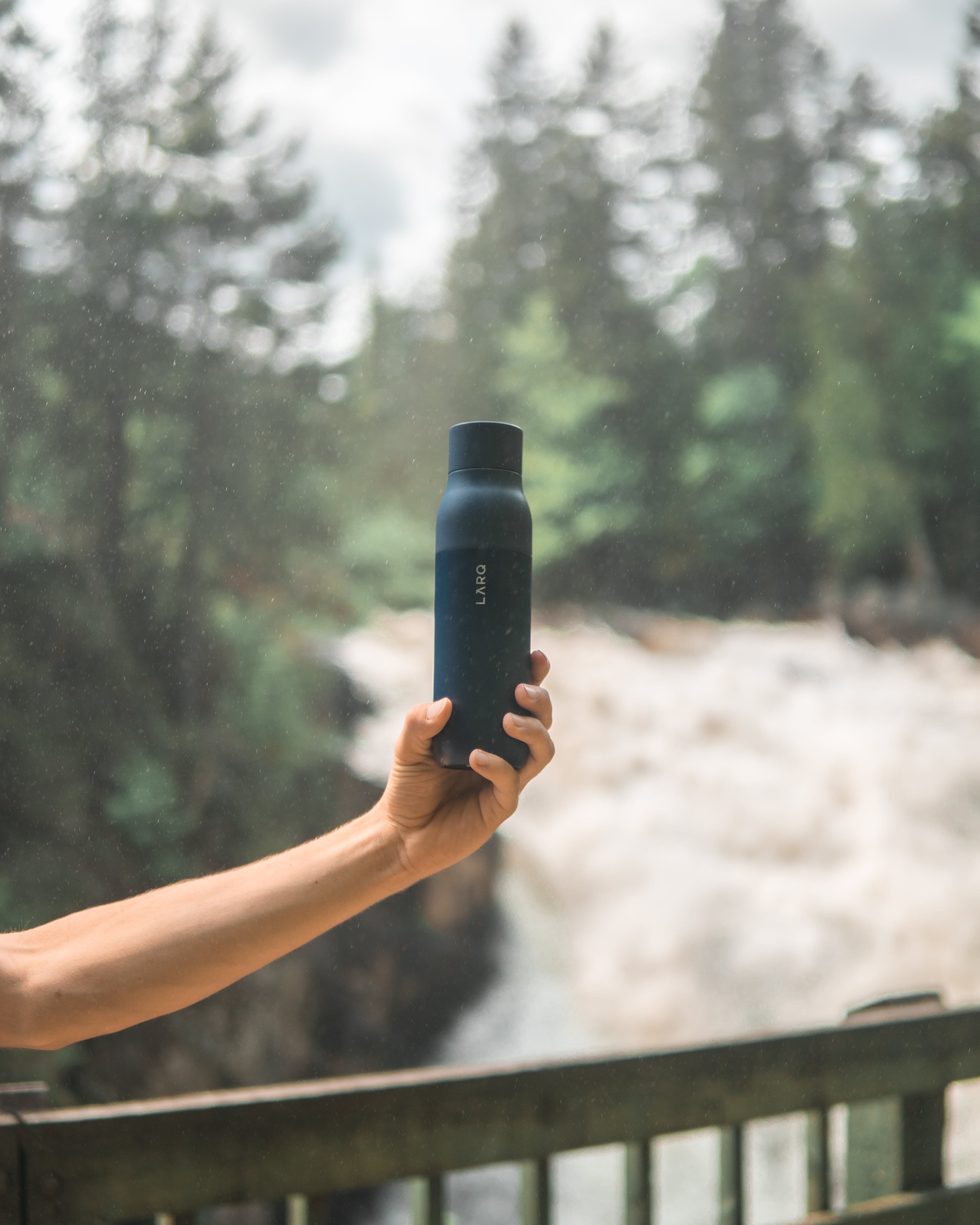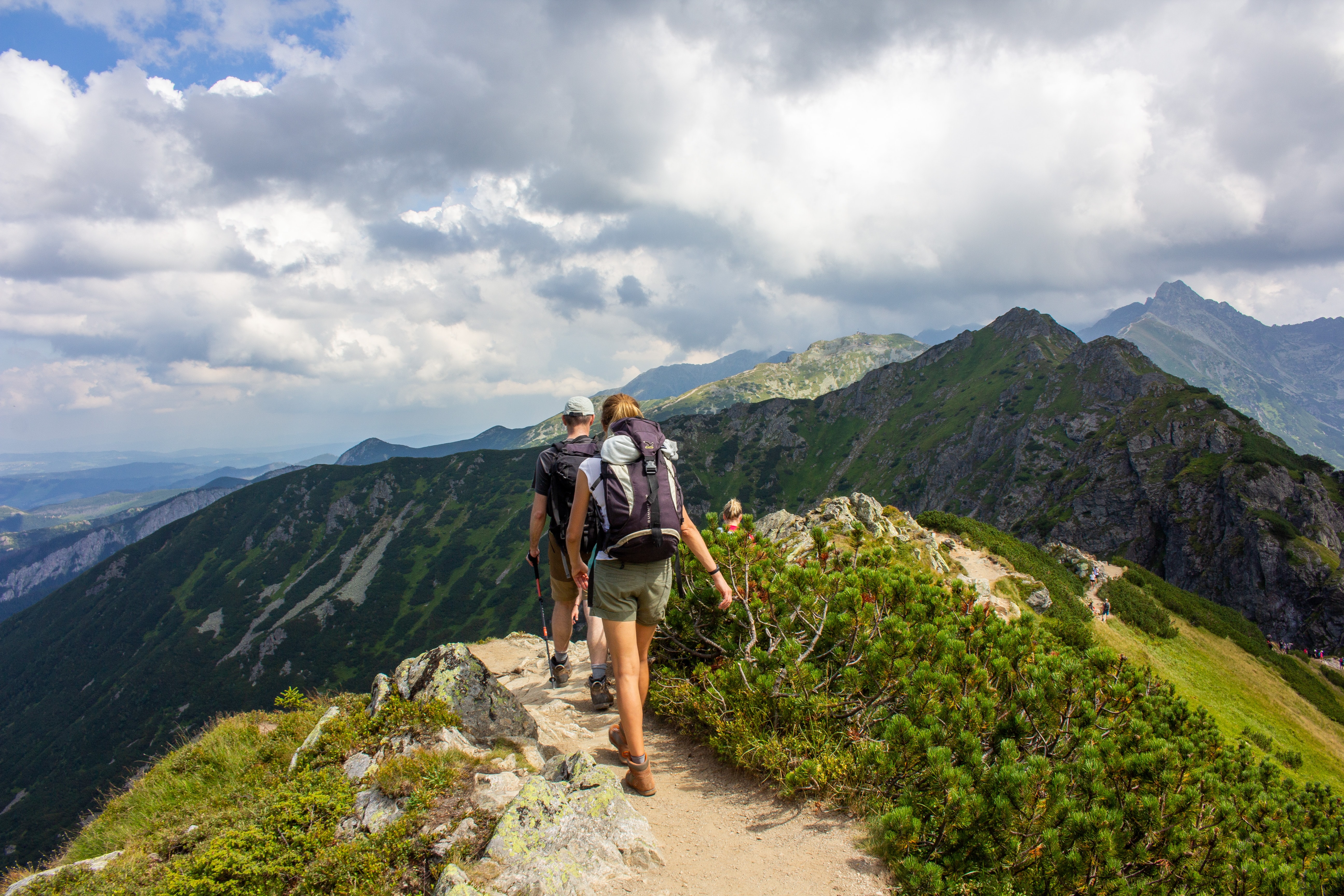Spring has officially sprung! And if you’re tired of being cooped up and dealing with major cabin fever after the long and stormy winter, you’re probably itching to get out into the sunshine, get your body moving in the fresh air, and see those beautiful new blooms this new season has brought along with it. In other words: it’s the perfect time for a hike!
Hiking is one of the best ways to get quality exercise while enjoying the beautiful gifts that Mother Nature has given to us, but it can be intimidating if you don’t know where to start. Here’s a complete beginner’s guide to hiking, including how to pick a trail, what you need to bring, and how to get the most out of your trip, plus hiking tips to make sure you stay safe while enjoying those gorgeous views.
Step One: Choosing a hiking trail
The very first step to take while planning your first hike as a beginner hiker is to decide which hiking trail to explore!
There are several types of hikes of all different difficulty levels, distances, and terrains. You should pick your trail based on your fitness level and the kind of hike that you’re looking to do. Are you just trying to get out in the fresh air for an hour or two? If so, look for an easy nature trail with minimal incline. On the other hand, if you’re trying to get an intense workout in, look for more challenging trails with plenty of inclines.
Taking a look at your local National Park or State Park is always a good place to start to find well-maintained trails of all levels. If you’ve just started hiking, look for well-maintained trails in your area that are popular and fairly busy so that you can begin your trek in a safer environment.
If you’re brand-new to hiking (or just not too familiar with the area) it’s always a good idea to do some research on the trail before you go. Check apps like AllTrails or Hiking Project to read up on the trail conditions during the time of the year. Make sure to check the weather, especially if you’re doing a hike during a time when inclement weather is common. What you wear hiking will be dictated by the weather.

Step Two: Pack and dress for the trek
Next, you’ll want to make sure that you’re bringing everything you’ll need while you’re out on the trail. If you’re going for a quick day hike, you can get away with just a few bare necessities. However, if you’re going for longer hikes, you’ll want to make sure that you’re well-prepared.
Clothing
- A good pair of hiking boots – Your hiking shoes are arguably the most important part of your hiking gear. While your regular gym shoes might be okay for an easy, well-paved trail, they probably won’t help much in any muddy, rocky, or rough terrain!
for hiking shoes with heavy lugs that can help increase your traction. Trail-running shoes are a decent choice for some light and medium-intensity hikes, but it’s an especially good idea to invest in a good pair of hiking boots if you’re planning on making hiking a regular part of your exercise regimen.
Hiking boots are specifically made to handle some of the worst terrains that you might encounter on the trail, plus many are also waterproof to keep you warm and dry. - Layers – Layering is the name of the game when you’re dressing for a hike, especially if you’re going anywhere that is prone to random changes in weather. Choose light, moisture-wicking materials like silk, polypropylene, or bamboo for your base layer to keep you dry and cool once you start sweating. Then layer on another more insulating layer to protect yourself against the chill.
If your hike is going to be especially cold or windy, it’s also a good idea to add in a third waterproof and/or windproof layer for extra protection. Once you have all three layers, you can take them off or add them on as you please for optimum comfort once you start hiking! - Thick, comfy socks – Your feet are going to go through a ton of stress during your hike, so it’s important to keep them well-protected with the right socks. Merino wool socks are a great option for hiking since they wick moisture away while adding extra cushion for preventing friction and blisters.
Other hiking essentials
- Sun protection – Even if you don’t think it’s going to be sunny, you should still bring some sun protection with you! Add a high-SPF sunscreen and sunglasses to your pack, plus a brimmed hat if it’s going to be especially bright out to help protect your eyes from the sun’s rays.
- First aid kit – Staying safe and prepared is crucial on a hike. If you happen to fall, twist your ankle, or otherwise get injured, you may need to hike miles before getting help. So pack a couple of basic first aid items like bandaids, lip balm, antiseptic wipes, hand sanitizer, and tweezers. For longer hikes or camping, it’s also handy to bring a multi tool along with you too.
- Snacks – Bringing a couple of light, portable snacks is a must for any hike. Hiking can be incredibly taxing on your body, so bring along some nutrient-dense snacks like protein bars, nuts, seeds, and fruits to keep you going.
- Water bottle- Having plenty of water on hand is absolutely crucial on any hike. You don’t have to get a specific hiking water bottle, but for fresh, clean water at every sip, fill up your LARQ Bottle Filtered, which comes with a flip top straw to filter as you sip, or LARQ Bottle PureVis for self-cleaning action that’s perfect for everyday, and take it along for the trip.
- A pack – Finally, you’ll need something to carry all of your important gear with you on your back. If you’re only bringing a couple of small items, you should be able to use a fanny pack or shoulder pack. If you’re going on a longer hike, though, you’ll probably need a bigger backpack or hiking packs, which are ergonomically designed to be as comfortable as possible while you’re shouldering all that weight on the trail.

Step Three: Safety First
When you’re navigating unfamiliar territory on your own two feet, being prepared matters.
Hiking is better in groups.
It’s always a good idea to enlist the buddy system on a hike. Recruit a friend to come along with you, or check your local outdoor enthusiast Facebook groups to find hiking groups. This is also a great idea if you’re looking to explore more advanced trails and need a more experienced guide to come along with you.
In addition, make sure to tell someone who isn’t on the hike where you’re going, what time you’re planning on hitting the trailhead, and an expected time for your return.
Prepare for emergencies.
Hopefully you’ll never have to use this section, but it’s always more important to be prepared for the possibilities! After all, hiking often takes you to less-populated and wilder regions, which means the potential of encountering dangers like wild animals, dangerous terrain, or other humans.
So staying safe on the trail means brushing up on what you should do if you encounter one of these potentially dangerous situations. For example:
- If you encounter a bear: Talk calmly and make yourself as big and threatening-looking as possible, standing your ground rather than running away. Then leave the area as calmly as you can, moving sideways.
- If you encounter a mountain lion: Stay calm and move away slowly, doing everything you can to appear big and threatening (opening up your jacket, making loud noises, etc). Never crouch down in front of a mountain lion, as it might register you as prey.
This is another good reason to do plenty of research on the trail of your choice ahead of time! Knowing potential risks ahead of time gives you an opportunity to be better prepared.
Make sure you’re physically ready for the trek.
It’s a good idea to know your own fitness level since hikes can be very draining. If your goal is to complete a particularly challenging trail, you may need to do some training. Train for hiking by going on walks around your neighborhood, increasing the incline on your treadmill, or hiking shorter and milder local trails to get a feel for the movement.
Finally, it’s always a good idea to do some light dynamic stretching beforehand to get limbered up.
Step Four: Leave no trace!
Now it’s time to finally hit the trail! Take it slow, watch your footing, and always stay alert to your surroundings at all times.
Finally, it’s always important to practice “Leave No Trace” principles whenever you’re visiting a natural area: in other words, don’t leave anything behind or disturb any of the natural features of the trail — or take anything from it, either. It’s also a good idea to rinse your hiking boots between each hike to avoid cross-contamination between trails since you might pick up hitchhiking critters or seeds and sprouts while you’re exploring. This is a great way to keep each ecosystem healthy and minimize the risks of bringing invader species to other locales.
Conclusion
Hiking makes for great exercise and a great time, and spring is an excellent time to witness all the beautiful sights that nature has to offer. Before you get started hiking, make sure that you’re familiar with the trail you choose, go in groups, and bring along all the gear and navigation tools you’ll need. Now get out there and enjoy the view!
